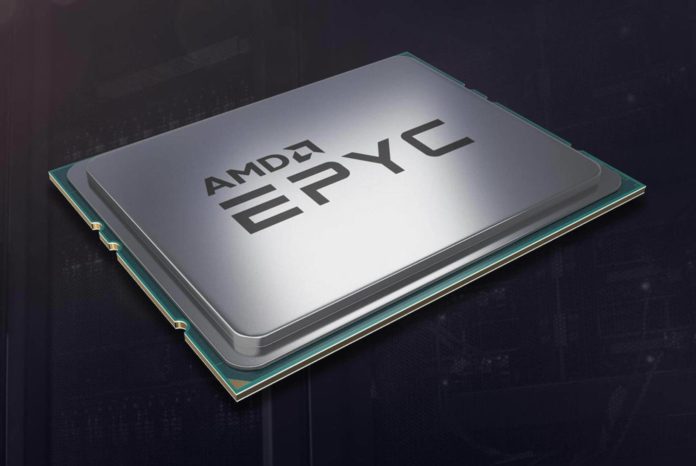Update: Intel’s PR team got back to us about these benchmarks. Evidently, there was a major communications gaffe with these benchmarks. The EPYC 7742 did use SMT, meaning all threads were being used. 1 core per thread in GROMACS was a typo. Moreover, they re-ran under the 2019.4 build and still saw a Xeon performance lead, relative to EPYC. As with all vendor benchmarks, we’d suggest taking these with a bucketful of salt. But we do appreciate the attempt to rectify the situation. We look forward to third-party benchmarks where the EPYC 7742 goes up against the Xeon 9200 series
Total War: Rome 2 has an interesting loading screen tip: Fiddles are not a good fire suppressant. Well, while Rome’s burning, Intel’s hardware testing team seems to not have gotten the message. Recent “benchmark” (and we use big scare quotes around the word “benchmark”) results from Intel would have us believe that a dual AMD EPYC Rome 7742 is as much as 84 percent slower than Intel’s Xeon 9282.
This is a bit of a headscratcher, really. The 7nm 7742 Rome part offers similar IPC to the Intel part and features substantially more cores (2×64 versus 2×56) despite costing at most one-third of the Intel offering. Intel technically hasn’t released pricing on the Xeon 9200 series at all. However, a point of reference we do have is the lower-end Xeon 8280 with 28 cores and in the same family. If the 9282 (with 2x 56 cores) scales linearly with price (and it most likely will be more than that, not less), you’re looking at a $40,000 outlay for the 9282, compared to $14,000 for a pair of 7742s. With that kind of price difference, the only justification Intel could offer is that its part delivers significantly better performance, reducing overall total cost of ownership long-term. And that’s what these benchmarks would like you to believe.

Except, the folks over at Servethehome, an authority on server CPUs, have done a very thorough takedown of what they report as “intentionally misleading” benchmarks. Semiaccurate chimed in by saying that “Intel messaging hits a new low.” These harsh responses stem from an evident lack of diligence when it came to the benchmarks themselves, the GROMACS workload in particular, and differences in the Intel and AMD setups used.
For starters, Intel used a version of GROMACs, 2019.3, which was widely known for not supporting Zen 2 optimizations like 256-bit AVX2 support. This build of GROMACS delivered significantly worse performance on EPYC Rome compared to Xeon. Crucially, GROMAC 2019.4 addressed this specific issue. The 7742 performs as expected under 2019.4. This build was out for over a month before the Intel tests and the fact that it was available was widely known as well. What else is off?
Intel ran the GROMACS test with turbo enabled on the AMD parts and turbo disabled on the Intel parts. This has a significant impact on performance as GROMACS factors in clockspeed changes in the overall score.

What’s most galling is that Intel runs GROMACS with 2 threads per core on the Xeon 9282, while only running it on a single thread per core on the dual AMD EPYC 7742s. This means that the Xeon was using 224 threads, compared to 128 with the dual EPYC 7742s.
Intel’s overall objective with the blog post seems to be to convince would-be buyers that its Xeon Platinum platform (somehow) offers more performance than EPYC Rome, despite having similar IPC, offering fewer cores, and costing several times more.
But benchmark results where competitor hardware is deliberately constrained are hard to find credible. I have an NVIDIA GeForce RTX 2070 Super in my rig. But I could definitely get a laptop UHD 620 to bench faster than it in AC: Odyssey if the RTX 2070 Super was running at the game at 8K and underclocked to 1000 MHz. Does that mean the UHD 620 is better for gaming? You decide.
Further reading:



Can’t blame Intel, the underdog is really punching up its weight class. Team blue is simply afraid.